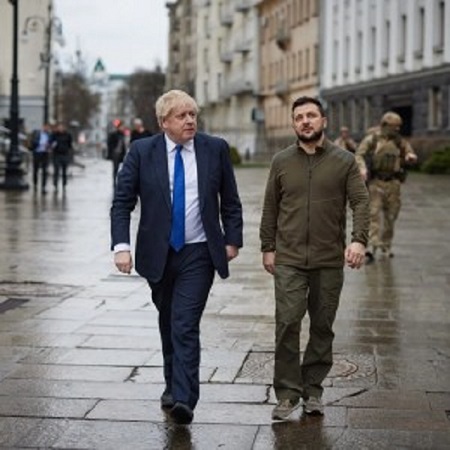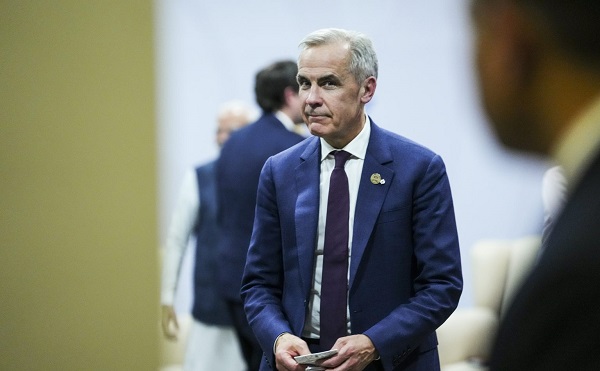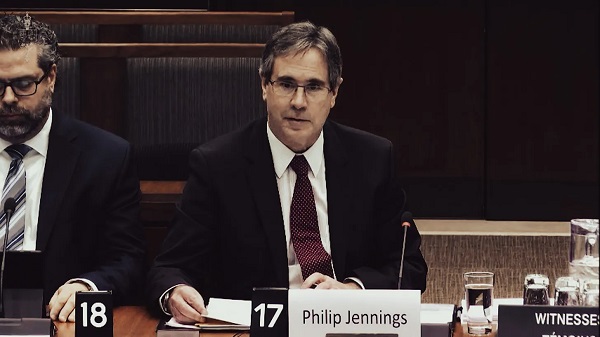Uncategorized
January was officially Australia’s hottest month on record

CANBERRA, Australia — Australia sweltered through its hottest month on record in January and the summer of extremes continued with wildfires razing the drought-parched south and flooding in expanses of the tropical north.
Australia’s Bureau of Meteorology confirmed the January record on Friday as parts of the northern hemisphere had record cold.
Australia’s scorching start to 2019 — in which the mean temperature across the country for the first time exceeded 30 degrees Celsius (86 degrees Fahrenheit) — followed Australia’s third-hottest year on record. Only 2005 and 2013 were warmer than 2018, which ended with the hottest December on record.
Heat-stressed bats dropped dead from trees by the thousands in Victoria state and bitumen roads melted in New South Wales during heatwaves last month.
New South Wales officials say drought-breaking rains are needed to improve the water quality in a stretch of a major river system where hundreds of thousands of fish died in two mass deaths during January linked to excessive heat. A South Australia state government report on Thursday found that too much water had been drained from the river system for farming under a management plan that did not take into account the impact of climate change on the river’s health.
The South Australian capital Adelaide on Jan. 24 recorded the hottest day ever for a major Australian city — a searing 46.6 C (115.9 F).
On the same day, the South Australian town of Port Augusta, population 15,000, recorded 49.5 C (121.1 F) — the highest maximum anywhere in Australia last month.
Bureau senior climatologist Andrew Watkins described January’s heat as unprecedented.
“We saw heatwave conditions affect large parts of the country through most of the month, with records broken for both duration and also individual daily extremes,” Watkins said in a statement.
The main contributor to the heat was a persistent high-pressure system over the Tasman Sea between Australia and New Zealand that blocked cold fronts from reaching southern Australia.
Rainfall was below-average for most of the country, but the monsoonal trough has brought flooding rains to northern Queensland state in the past week, leading to a disaster declaration around the city of Townsville.
Queensland’s flooded Daintree River reached a 118-year high this week.
Emergency services reported rescuing 28 people from floodwaters in the past week.
“The vast bulk of the population will not have experienced this type of event in their lifetime,” State Disaster Coordinator Bob Gee told reporters, referring to the extraordinary flooding.
Townsville Mayor Jenny Hill described the torrential rain as a “one-in-100-year event” that had forced authorities to release water from the city dam. The water release would worsen flooding in low-lying suburbs, but would prevent the Ross River from breaking its banks.
In the southern island state of Tasmania, authorities are hoping rain will douse more than 40 fires that have razed more than 187,000 hectares (720 square miles) of forest and farmland by Friday. Dozens of houses have been destroyed by fires and flooding in recent weeks.
Milder weather since Thursday has lowered the fire danger but it was forecast to escalate again from Sunday.
The Climate Council, an Australian independent organization formed to provide authoritative climate change information to the public, said the January heat record showed the government needed to curb Australia’s greenhouse gas emissions which have increased during each of the past four years.
“Climate change is cranking up the intensity of extreme heat, and January’s record-breaking month is part of a sharp, long-term upswing in temperatures driven primarily from the burning of fossil fuels,” the council’s acting chief executive Martin Rice said in a statement.
Rod McGuirk, The Associated Press
Uncategorized
Cost of bureaucracy balloons 80 per cent in 10 years: Public Accounts

The cost of the bureaucracy increased by $6 billion last year, according to newly released numbers in Public Accounts disclosures. The Canadian Taxpayers Federation is calling on Prime Minister Mark Carney to immediately shrink the bureaucracy.
“The Public Accounts show the cost of the federal bureaucracy is out of control,” said Franco Terrazzano, CTF Federal Director. “Tinkering around the edges won’t cut it, Carney needs to take urgent action to shrink the bloated federal bureaucracy.”
The federal bureaucracy cost taxpayers $71.4 billion in 2024-25, according to the Public Accounts. The cost of the federal bureaucracy increased by $6 billion, or more than nine per cent, over the last year.
The federal bureaucracy cost taxpayers $39.6 billion in 2015-16, according to the Public Accounts. That means the cost of the federal bureaucracy increased 80 per cent over the last 10 years. The government added 99,000 extra bureaucrats between 2015-16 and 2024-25.
Half of Canadians say federal services have gotten worse since 2016, despite the massive increase in the federal bureaucracy, according to a Leger poll.
Not only has the size of the bureaucracy increased, the cost of consultants, contractors and outsourcing has increased as well. The government spent $23.1 billion on “professional and special services” last year, according to the Public Accounts. That’s an 11 per cent increase over the previous year. The government’s spending on professional and special services more than doubled since 2015-16.
“Taxpayers should not be paying way more for in-house government bureaucrats and way more for outside help,” Terrazzano said. “Mere promises to find minor savings in the federal bureaucracy won’t fix Canada’s finances.
“Taxpayers need Carney to take urgent action and significantly cut the number of bureaucrats now.”
Table: Cost of bureaucracy and professional and special services, Public Accounts
| Year | Bureaucracy | Professional and special services |
|
$71,369,677,000 |
$23,145,218,000 |
|
|
$65,326,643,000 |
$20,771,477,000 |
|
|
$56,467,851,000 |
$18,591,373,000 |
|
|
$60,676,243,000 |
$17,511,078,000 |
|
|
$52,984,272,000 |
$14,720,455,000 |
|
|
$46,349,166,000 |
$13,334,341,000 |
|
|
$46,131,628,000 |
$12,940,395,000 |
|
|
$45,262,821,000 |
$12,950,619,000 |
|
|
$38,909,594,000 |
$11,910,257,000 |
|
|
$39,616,656,000 |
$11,082,974,000 |
Uncategorized
Trump Admin Establishing Council To Make Buildings Beautiful Again


From the Daily Caller News Foundation
By Jason Hopkins
The Trump administration is creating a first-of-its-kind task force aimed at ushering in a new “Golden Age” of beautiful infrastructure across the U.S.
The Department of Transportation (DOT) will announce the establishment of the Beautifying Transportation Infrastructure Council (BTIC) on Thursday, the Daily Caller News Foundation exclusively learned. The BTIC seeks to advise Transportation Secretary Sean Duffy on design and policy ideas for key infrastructure projects, including highways, bridges and transit hubs.
“What happened to our country’s proud tradition of building great, big, beautiful things?” Duffy said in a statement shared with the DCNF. “It’s time the design for America’s latest infrastructure projects reflects our nation’s strength, pride, and promise.”
“We’re engaging the best and brightest minds in architectural design and engineering to make beautiful structures that move you and bring about a new Golden Age of Transportation,” Duffy continued.
Mini scoop – here is the DOT’s rollout of its Beautifying Transportation Infrastructure Council, which will be tasked with making our buildings beautiful again. pic.twitter.com/
9iV2xSxdJM — Jason Hopkins (@jasonhopkinsdc) October 23, 2025
The DOT is encouraging nominations of the country’s best architects, urban planners, artists and others to serve on the council, according to the department. While ensuring that efficiency and safety remain a top priority, the BTIC will provide guidance on projects that “enhance” public areas and develop aesthetic performance metrics.
The new council aligns with an executive order signed by President Donald Trump in August 2025 regarding infrastructure. The “Making Federal Architecture Beautiful Again” order calls for federal public buildings in the country to “respect regional architectural heritage” and aims to prevent federal construction projects from using modernist and brutalist architecture styles, instead returning to a classical style.
“The Founders, in line with great societies before them, attached great importance to Federal civic architecture,” Trump’s order stated. “They wanted America’s public buildings to inspire the American people and encourage civic virtue.”
“President George Washington and Secretary of State Thomas Jefferson consciously modeled the most important buildings in Washington, D.C., on the classical architecture of ancient Athens and Rome,” the order continued. “Because of their proven ability to meet these requirements, classical and traditional architecture are preferred modes of architectural design.”
The DOT invested millions in major infrastructure projects since Trump’s return to the White House. Duffy announced in August a $43 million transformation initiative of the New York Penn Station in New York City and in September unveiledmajor progress in the rehabilitation and modernization of Washington Union Station in Washington, D.C.
The BTIC will comprise up to 11 members who will serve two-year terms, with the chance to be reappointed, according to the DOT. The task force will meet biannually. The deadline for nominations will end Nov. 21.
-

 International1 day ago
International1 day agoBoris Johnson Urges Ukraine to Continue War
-

 Great Reset1 day ago
Great Reset1 day agoRCMP veterans’ group promotes euthanasia presentation to members
-

 Business14 hours ago
Business14 hours agoFederal major projects list raises questions
-

 Business2 days ago
Business2 days agoTaxpayers paying wages and benefits for 30% of all jobs created over the last 10 years
-

 Business2 days ago
Business2 days agoIs affirming existing, approved projects truly the best we can do in Canada?
-

 MAiD1 day ago
MAiD1 day agoHealth Canada suggests MAiD expansion by pre-approving ‘advance requests’
-

 Business15 hours ago
Business15 hours agoBlacked-Out Democracy: The Stellantis Deal Ottawa Won’t Show Its Own MPs
-

 International1 day ago
International1 day agoTrump closes in on peace in Ukraine










